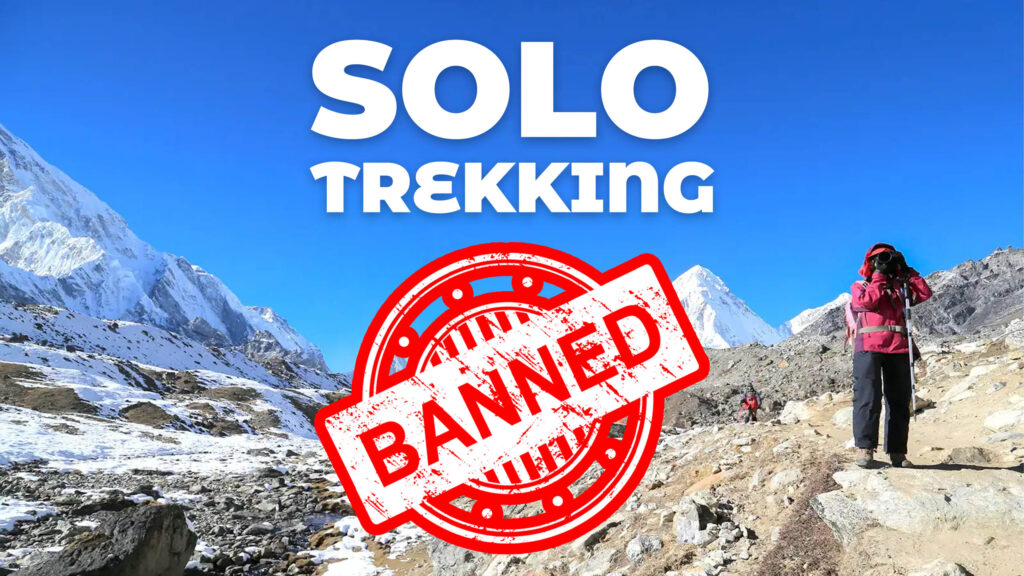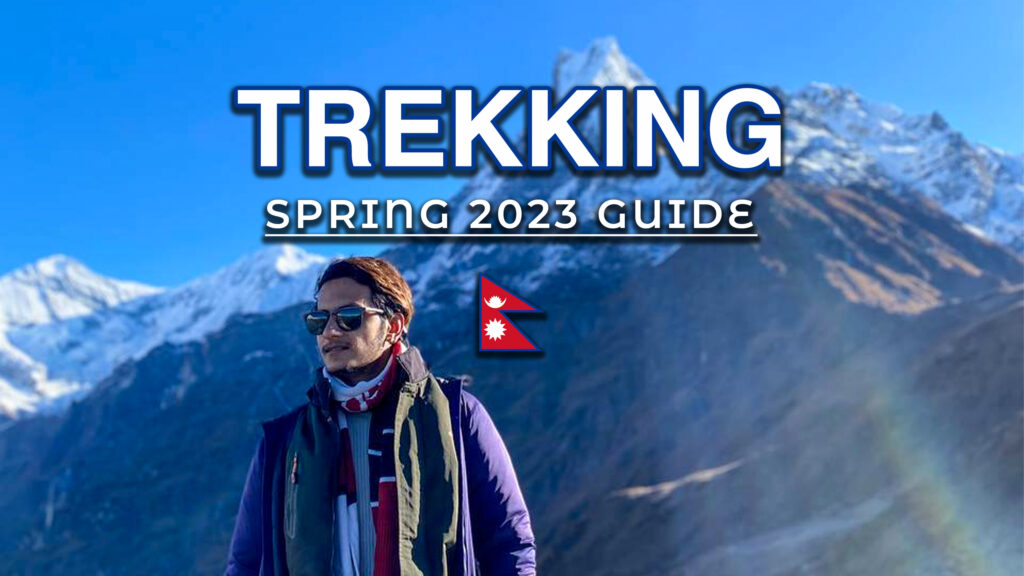Nepal, one of the world’s most popular destinations for trekking and mountaineering, has banned solo trekking in an effort to improve safety and security for visitors. The new rule, announced by the Nepalese government on March 13, 2023, requires all trekkers to hire a licensed guide or porter when trekking in groups of one or more.
The ban comes after a spate of accidents and incidents involving solo trekkers in recent years, with over 50% of mountain accidents in Nepal involving solo trekkers. While trekking in Nepal can be a thrilling experience, it can also be dangerous for those without experience or knowledge of the local terrain and weather conditions. With this in mind, hiring a licensed guide or porter not only provides a level of safety and security, but also supports the local economy by creating employment opportunities for Nepalese guides and porters.
The trekking industry is one of Nepal’s largest moneymakers, but the cost of search and rescue missions for solo hikers who get lost in remote regions can be significant. “When you are traveling solo, in case of emergencies there is no one to help you,” says Mani R. Lamichhane, Director of the Nepal Tourism Board. “It is fine if they are traveling in the cities, but in the remote mountains, the infrastructure is not adequate.”
Moreover, when tourists go missing or are found dead, even the government cannot track them because they have taken remote routes, adds Lamichhane. The new rule aims to address this issue by ensuring that trekkers are accompanied by licensed guides or porters who are trained in first aid and can provide assistance in case of an emergency.
The new rule has been welcomed by many in the Nepalese tourism industry, who believe it will help to improve the overall safety and security of visitors to the country. The decision also comes after several high-profile incidents involving solo trekkers in recent years, including the disappearance and presumed death of a British woman in 2022.
Also read: Spring 2023 Guide for Trekking in Nepal
Key Takeaways
Here are some key takeaways and insights to keep in mind regarding Nepal’s ban on solo trekking in remote regions:
- The new rule applies to all trekkers, regardless of their level of experience or the difficulty of the trek, when trekking in remote regions.
- Trekkers are required to hire a government-licensed guide or join a group.
- The ban is a response to the growing number of accidents and incidents involving solo trekkers in recent years, which make up over 50% of all mountain accidents in Nepal.
- The cost of search and rescue missions for solo hikers who get lost in remote regions can be significant.
- Hiring a licensed guide or porter not only provides a level of safety and security, but also supports the local economy by creating employment opportunities for Nepalese guides and porters.

Tourism and Economy
Tourism, mountaineering, and trekking have been significant contributors to the economy of Nepal. Here are some insights and data to support this:
- Tourism is one of the largest contributors to Nepal’s economy. According to the Nepal Tourism Board, tourism accounted for 7.9% of the country’s GDP in 2019, providing jobs for over 1 million people.
- Mountaineering and trekking are among the most popular activities for tourists visiting Nepal. In 2019, over 230,000 tourists visited the country for trekking and mountaineering, according to the Department of Tourism.
- The Everest region alone attracts around 50,000 trekkers every year. This region, which is home to the world’s tallest mountain, provides significant revenue for local businesses and communities.
- The Annapurna Circuit, another popular trekking destination in Nepal, is estimated to generate over $18 million in revenue each year, according to the Annapurna Conservation Area Project.
- In 2018, the Nepalese government collected around $4.2 million in mountaineering fees alone. This revenue is used to support conservation and infrastructure projects in mountainous areas.
- The tourism industry, which includes mountaineering and trekking, has played a crucial role in Nepal’s economic growth. In the decade between 2009 and 2019, the number of tourists visiting Nepal increased by over 250%, according to the Nepal Tourism Board.
Also read: 25+ Travel Hacks for Trekking in Nepal
Overall, tourism, mountaineering, and trekking have been significant contributors to Nepal’s economy. The revenue generated from these activities has supported local communities, conservation efforts, and infrastructure projects. As such, it is important for the government to balance the safety and security of visitors with the needs of local businesses and communities. The recent ban on solo trekking in remote regions is a step towards achieving this balance.



Pingback: Travel Nepal Using ChatGPT – FromEverest